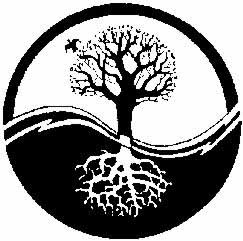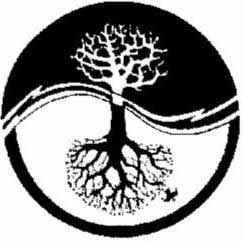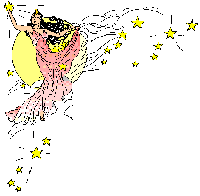Pagan and Wiccans
 VS
VS 
Wicca is a religion that has roots going back to the dawn of man. The late Dr. Margaret Murry traced Witchcraft's origins to Paleolithic times, 25,000 years ago. Because the first humans depended so much on the animals and plants around them for life, animism developed to be what was the first known religion. Animism is ascribing to each natural phenomena a spirit to reside over it. A God or Goddess or spirit was in control of the seas, mountains, and of the animals that were hunted. New information about cave paintings and Goddess figurines and other forms of animism are being found every year.Wicca is a joyous religion springing from our kinship with nature. It is a merging with the Goddesses and Gods, the universal energies which created all in existence. It is a personal, positive celebration of life.
Wicca is a spiritual path originating in Britain which recognizes both a feminine and masculine element to the divine. It believes that nature is sacred and should be protected. Aside from the protection of the environment Wicca's central theme, called the wiccan rede, is "if it does no harm do your own will". This is a positive morality meaning think before you act.
Aside from the Wiccan Rede - and the "three-fold law."
Wiccans do not have to subscribe to a fixed ideology so beliefs vary, however the common theme is that Wiccans gain a connection with the divine spirit of mother nature through the celebration of her cycles through the wiccan calendar. This is done either individually or with other Wiccans.
According to most versions of the three-fold law, whatever one does comes back to one thrice-multiplied, in amplified repercussion. One short, rhymed version of the Wiccan Rede states "Eight words the Wiccan Rede fulfill: An it harm none, do what you will." Often "none" is interpreted to include the doer them self in analogy to the "golden rule" of other faiths. There are no universal proscriptions regarding food, sex, burial or military service and Wiccans, as a rule, discourage proselytization (attempts to convert others to a different religion).
At key points in the year Wiccans gather and connect with nature, generally by forming a circle, sometimes using set forms of words, or otherwise improvising according to the participants needs.
The morality of Wicca is based heavily on free will allowing individual freedom with as little interference as possible. There is high level of equality in Wicca with the emphasis on the circle and the lack of any preaching. The concept of a talking stick where everyone has their say is more widespread than dominating leaders. The emphasis is on the creation of harmony by allowing the individual to do their own will but encouraging them to think of the harm done to others by the exercising of this freedom.
In order to understand Wicca it is essential to know its roots. All countries have a native spiritual tradition based around reverence for the forces of nature. Wicca is the native tradition for the nations of England, Scotland, Ireland, and Wales, and is rooted in the period before 500BC which marks the start of the iron age. The sacred sites from this period, in particular Avebury/Silbury and Stonehenge, are important to Wicca as are the ancient British legends, for example the Mabignogian. Wicca was illegal in Britain for nearly 1000 years up until 1951, however following it's legalization a large amount of material has been published and Wicca is now accessible to all.
Wicca has its own art, including jewelry, and also has a deep understanding of the power of plants, in particular the influence of their fragrances. Many Wiccans also use crystals, both for their natural beauty and for their spiritual power.
Wiccan jewelry includes earrings, pendants and necklaces which often contain precious stones with particular meaning and Wiccan symbols. Crystals give power to the wearer.
Wicca is a neo-pagan religion based on the pre-Christian traditions of England, Ireland, Scotland, and Wales. Its origins can be traced even further back to Paleolithic peoples who worshipped a Hunter God and a Fertility Goddess. Cave paintings found in France (and dated at 30,000 years old) depict a man with the head of a stag, and a woman with a swollen, pregnant belly. They stand in a circle with eleven mortals. These archetypes of the divine are worshipped by Wiccans to this very day. By these standards, the religion that is now called Wicca, is perhaps the oldest religion in the world.
In 1951, the laws against Witchcraft were repealed in England. A man named Gerald Gardner was the first to come into the public eye with description of what modern witches were practicing. His information came from the traditions of a coven called the New Forest Witches, and from Ceremonial Magick and the Cabbala. He began what is now called the Gardnerian Tradition of Wicca. From Gardnerian came Alexandrian Tradition and a host of other offshoots that today number in the hundreds.
Wicca is based on a deep respect for nature and the certain knowledge that we do not have the right to exploit it for our own gain. Wiccans are deeply concerned with conservation and ecology, and as in all Neo-Pagan religions.
Wiccans believe that both animate and inanimate objects possess a spirit which forms part of the Whole. Spirit is that essence which every object possesses linking it to nature.
Wicca is a celebration of the life-forces of nature as personified by the Goddess and her consort, the Gods.
Some Wiccans see their inspiration and traditions as coming directly from the gods. Certain Wiccan mythology holds that Wicca has come down from the stone age, surviving persecution in secret covens for hundreds of years.
Others say that their Wicca is a long-held family tradition (or "fam trad"), passed down through villages and grandmothers. Aidan Kelly argues that modern Wicca was largely pieced together by Gerald Gardner from Margaret Murray, Charles Leland and other sources, with significant revisions by Doreen Valiente (and others), beginning in 1939.
Whatever its origins, Wicca today is a vibrant, modern religion, open to change, creativity and personalization. Wicca is different than the religions of the ancient people, but it embraces some of the same beliefs. Wiccan's have a common belief that the Earth is Sacred and the animals that dwell on it are sacred as well. Wicca or Witchcraft, Paganism, High Magic and other forms of Occultism are not Satanism. Satan is a belief of Christianity.
GODS & GODDESSES

Although some Wiccans focus on particular gods from particular world mythologies, Wiccans may worship many god(desse)s by many different names. Most worship some form of the Great Goddess and Her consort, The Horned God. Such duo-theistic forces are often conceived as embodying complementary polarities, not in opposition. In some traditions worship of the Goddess is emphasized, although in others the Goddess and God are seen as complementary co-equals.
The Goddess and God may be seen as associated with certain things (such as the Goddess with the earth or moon, God with sun and wildlife, etc), but there are no hard and fast rules. Some traditions worship the Goddess alone while others see Divinity as essentially beyond human understanding, with "Goddess" and "God" simply a convenient shorthand.
Some ritual items are common to almost every Wiccan tradition, such as the athame (ritual knife) and chalice (ritual cup). Others may be used by some traditions but not others: bells, brooms, candles, cauldrons, cords, drums, incense, jewelry, special plates, pentacles, scourges, statues, swords, staves and wands.
The meaning of these items, their use and manufacture will differ among traditions and individuals. Usually a Wiccan ritual will involve some sort of creation of sacred space (casting a circle), invocation of divine power, sharing of dance/song/food or wine and a thankful farewell and ceremonial closing. Rituals may be held at Wiccan "sabbats" or "esbats" or to mark life transitions such as births, coming-of-age, marriages/handfastings, housewarmings, healings, deaths or other rites of passage.
Most Wiccans mark eight holiday "sabbats" in the "wheel of the year," falling on the solstices, equinoxes and the four "cross-quarter days" on or about the first of February, May, August and November. The names of the sabbats may differ between traditions, and many Wiccans also mark "esbats," rituals for worship in accordance with a given moon phase (such as the night of the full moon).
Although there is no one source for all Wiccan liturgy, many liturgical items such as the methods for casting the circle, the "Charge of the Goddess," certain myths and formulaic expressions are common to many traditions.
Some common formulaic expressions include "hail and welcome/farewell," "blessed be and the closing "Merry meet and merry part, and merry meet again."
There is no one bible or book of common prayer for all Wiccans, however, and great value is placed on creativity, poetry and the artful integration of different myths and ritual elements.
Some myths and associations are common to many Wiccan traditions, such as the Goddess' giving birth to the Horned God, the theme of their courtship and His death, the descent of the Goddess into the realm of death and others.
Another theological point held in common by many Wiccans is the immanence of deity/divinity within the natural world, self and cycle of the seasons. This places value on the earth and this world, as distinguished from views of transcendent divinity and an unenchanted creation.
Wiccans as a whole are very much "into" cycles: of life, of the moon and seasons. Cyclical change as an erotic dance of life, death and rebirth is a popular theme in Wiccan imagery, ritual and liturgy.
Although it may be foolhardy to compare things as complex as religions, people do. Many Wiccans distinguish themselves from Satanists, for example, in preferring complementary views of divinity to adversarial ones. Others may note their own comfort and embrace of ambiguity and polytheism (many gods).
Unlike the Jewish, Christian or Islamic traditions, there is little emphasis on interpretation of "scripture" or a revealed text. Although many Wiccans may believe in some sort of reincarnation, they may distinguish themselves from Buddhists in seeing life as a journey or adventure without any desire to "leave the wheel" of return.
Like Hindus, Wiccans may pride themselves on their tolerance for other paths, like Buddhists they may value personal insight and like Taoists they may seek to align themselves more perfectly with nature. Some Wiccans may separate themselves from the "New Age" in their value for both "light" and "dark" aspects of existence, a do-it-yourself attitude and a distrust of money or hierarchies of enlightenment.
Can I be a Christian/ Jew/ Muslim/ Buddhist/ Taoist/ Astrologer/ Druid/ Shaman/ omnivore/ whatever and a Wiccan? Since much of Wicca is more worldview and ceremonial practice than anything else, there is no Wiccan proscription of such things. Most traditions have no requirement to denounce any other faith and, indeed, Wiccans often look askance at "one true wayisms" which claim to have a monopoly on truth, divine revelation or enlightenment. "Christian Wiccans" probably face the largest skepticism, however, given the history and ongoing reality of allegedly "Christian" persecution.
Prejudice (fear of job-loss, child-custody challenges, ridicule, vandalism and even violence) may still keep many Wiccans "in the broom closet," with concealment and dual observances a traditional Wiccan defense against persecution. This may make contact with Wiccans difficult in some areas. Since Wiccan worship is fairly active by its nature, non-participating observers are rarely invited to Wiccan rituals.
Usually "dedication" ceremonially marks the beginning of Wiccan study, while "initiation" may mark full membership in a coven/tradition (such as after "a year and a day") or may indicate elevation in skill or to special clergy status. Some traditions look on all initiates as co-equal clergy, while others have grades or "degrees" of initiation, which may be marked by distinct sacramental ceremonies, duties or expectations within the tradition.
Almost all Wiccans, however, have some sort of ceremony or psychological practice to better attune themselves with divinity, encouraging insight and a sense of efficacy. Others may cast love spells or other curses.
Some Wiccans call themselves "Witches," capitalizing it as a gesture of solidarity with the victims of the Burning Times, but this is a personal decision. Although many Wiccans today may cast spells and practice Magick, these are not considered an integral part of Wicca by all Wiccans. Wicca is not traditional folk magic and all magic is not necessarily Wiccan, anymore than all people who pray belong to any particular religion.
"The Burning Times" is the term used by many modern Neo-Pagans and feminists to refer to the great European witch-hunts of the early modern period, coincident with the time of the reformation and seen by many as a crucial step in Christianity's crushing of the Pagan religions, driving these underground. Some authors claim as many as ten million people were killed in these hunts, while more recent scholars put the number of documented deaths at 20-100 thousands, 80-90% of these women. Sometimes these numbers are doubled to account for non-judicial killings and deaths from torture, suicide, etc. Whatever the numbers, however, victims of these hunts are perceived as martyrs by Wiccans today, with the lessons of intolerance, misogyny and religious terror clearly noted.
WICCAN HOLIDAYS
SAMHAIN- (sow-in) Falling on October 31, this day has numerous reasons of importance. It is the eve of the Celtic New Year and the first day of Winter. Samhain is also the Irish Gaelic word for November. On this Great Sabbat night, it is said, the veil between the Material and Spiritual Worlds are thinnest, and neither human or spirit need any special Magick or password to cross. Spirits of loved ones will also congregate around the Samhain fires to gain warmth and communion with their living kin.
YULE- (yool ) December 21 or 22 , marks the night of Winter Solstice, witches celebrate the darkest and longest night of the year. On this night we are reminded that our God is re-born in order to bring light and warmth back to the earth.
IMBOLG- (im-molg) Also known as "Candlemas" falls on February 2. This Greater Sabbat is the quickening of the year, the first stirrings of the Spring. It is a f ire festival that emphasizes the light returning to the world. It is the celebration of the three phases of the Goddess: the Maiden, the Mother and the Crone (or Enchantment, Ripeness and Wisdom).
OSTARA- (o-star-a) Lands on the Vernal Equinox - March 21 or 22. On this Lesser Sabbat, we are reminded that light and dark are in perfect balance. However, light is mastering dark. The days are growing longer while the nights are growing shorter.
BELTANE- (bell-tane) Falling on May l, otherwise known as May Day, this is the Celts f first day of Summer. The original meaning of he word has a Gaelic derivation of "Bel-fire". Bel is the name of the Celtic God of Light and Fire. Bel, or Balor is known as "the Bright One". Fires were lit to commemorate the return of life and fertility to the world. This day has been adopted by many other cultures and today many people still perform a May Pole Dance, feast at picnics and remember why people fall in love.
LITHA- (leetha) Also named Midsummer of Summer Solstice, this is a Sabbat strictly for the sun. On June 21 or 22, witches acknowledge the God's light and warmth on the day when he shines the highest, brightest and longest. This is a time to rejoice in the full flood of the years abundance.
LAMMAS- Primarily this Sabbat is called LUGHNASADH (loon-na- sah). Come August l, the land reminds us that it is time for harvesting and preparations for the winter. The Celtic God and Warrior Lugh, spares the life of his enemy in exchange for the Secrets of Agricultural Prosperity. Therefore, Lammas is the first of three harvesting celebrations. The first being , the harvest of wheat and corn.
MABON- (may-bin) Also called the Autumnal Equinox, September 21 or 22 is a joyous day that again is remembered for having equal hours of light and dark. However, this time, dark is the master over light. This day is also the celebration of the second harvest. From here, the wheel of the year ends with the third and final harvesting and the beginning of another year of Samhain.
PAGANISM
The words 'Paganism' and 'Pagan' come from the Latin 'paganus,' meaning 'country dweller. In simplest terms - Paganism is a religion of place, or a native religion, for example the Native American's religion is Pagan, Hinduism is a form of Paganism. All Pagan religions are characterized by a connection and reverence for nature, and are usually polytheistic i.e. have many Gods and/or Goddesses.
Paganism is a religion of nature, in other words Pagans revere Nature. Pagans see the divine as immanent in the whole of life and the universe; in every tree, plant, animal and object, man and woman and in the dark side of life as much as in the light. Pagans live their lives attuned to the cycles of Nature, the seasons, life and death.
Unlike the patriarchal religions (Christianity, Islam, Judaism) the divine is female as well as male and therefore there is a Goddess as well as a God. These deities are within us as well as without us (immanent); they are us. They are not simply substitutes for the Muslim or Judeo-Christian God. This is because the Gods of the major religions tend to be super-natural i.e. above nature whereas Pagan deities are natural, symbolizing aspects of nature or human nature. Having said that God and Goddess are split from the Great Spirit or Akashka which probably equates to the God of the patriarchal religions.
The Goddess represents all that is female and the God represents all that is male. But because nature is seen as female the Goddess has a wider meaning. Often called Mother Earth or Gaia she is seen as the creatrix and sustainer of life, the mother of us all which makes all the creatures on the planet our siblings.
There are sub-groups of named Gods and Goddesses called Pantheons, drawn from the distant past, for example Isis and Osiris from Egypt or Thor, Odin, Freya et al from Norse religion and mythology. Ancient Pagans would have worshipped one or a small number of Gods and Goddesses, whilst often recognizing the validity of other people's deities. The concept of an overall, un-named Goddess and God, the sum totals of all the others, appears to be a recent one but individual named deities represent particular human qualities or archetypes and are often used as a focus for celebrations and spiritual rites.
Paganism has developed alongside mankind for thousands of years; as cultures have changed so has Paganism, yet it is grounded in deep rooted genetic memories that go back to Neolithic times and before. Thus Paganism is not just a nature religion but a natural religion.
Paganism in the west takes a number of forms including Wicca, Druidism, and Shamanism.
To Pagans the four ancient elements, Earth, Air, Fire and Water have special significance. The importance of these is hard to define because they have so many correspondences, for example they are associated with the four directions, North, East, South and West. Each element is a kind of spiritual substance from which all things are made especially ourselves and at the same time are Guardians both of ourselves and of the Goddess and God, and guarding the gateways between this world and the other world.
Many Pagans believe in reincarnation in some form. It gives Pagans a substantially different view of life. Early Christians saw Karma as a kind of treadmill, trapping people in endless reincarnations, never free. But Pagans see reincarnation as, at best, a chance to improve or to continue unfinished work, and at worst just a simple re-cycling of souls.
|
The Wheel of the Year
This wheel is sometimes called the Gardnerian Wheel because it is a combination of two ancient wheels (acknowledgements to Kenny Klein). The hunting wheel, the oldest, has two God births: The Oak King is born at midsummer and rules through to Yule when he dies and the Holly King is born. The agricultural wheel has the young God born at Ostara, symbolic of the sun/son rising in the East. He dies in the second harvest, Mabon, which means 'the young Lord'.
In the different traditions these holidays (holy days) may have different names, for example Imbolc is called the festival of light in the northern tradition.
Western Pagans have no fixed temples in which to worship but instead (usually) make a circle around all the celebrants (or the celebrants themselves form a circle) in a room or in a clearing or on a beach or find a naturally occurring circle such as a grove or use one of the ancient stone circles. Pagans have no hierarchy like the established religions so Pagans are free to follow whatever spiritual path they choose.
Pagans like to celebrate more rites of passage than the prevailing culture. Most people see two rites of passage: coming of age (18 or 21) and marriage. Christians also get a first one, the Christening, though the subject is unable to experience it. The Pagan equivalent of a Christening is a Naming ceremony. Other rites of passage may include Child - celebrating change from baby to child, Puberty and so on. Marriage is called hand-fasting and this may be arranged for eternity or just for a year-and-a-day, renewable. The latter is a great stabilizer against casual relationships and divorces, providing some level of commitment yet recognizing that some relationships will not last.
PAGAN SYMBOLS
THE MOON - changes it's face roughly every 28-29 days, at about the same rate that female humans menstruate, it has long been associated with the feminine and hence the Goddess - Artemis and Hecate.
THE SUN - The God symbol - Apollo and Jesus.
THE CHALICE: is a cup used in rituals, It is a container and is associated with the womb and vagina, and hence a symbol of the Goddess. Two examples of Chalices in myth are the Cup that Jesus had drunk from at the last supper, and the Holy Grail, which the knights of the round table had to search for in order for Arthur (and the land) to become whole again.
THE ATHAME: is also used in rituals, primarily to focus and concentrate power. It is a phallic symbol and as a cutting tool a divider, and thus represents The God. Magic swords are another version of the Athame and are popular in fantasy novels and myth. One example is Excalibur, which King Arthur uses via "divine right". Another is Storm bringer, as used by Elric in the stories written by Micheal Moorcock. Note the dual imagery. Excalibur was used as a force for order, Storm bringer drank souls and was a force for Chaos. Tools are only as good as their user.
THE FIVE POINTED STAR: Pentangle or a Pentagram, For neo-pagans this is symbolic of the four elements: air, water, earth, fire + spirit. See the qualities page for details. Pythagoras held the number 5 to be the sum of the feminine element (2) and the masculine element (3), so it is also symbolic of a union of masculine and feminine. The symbol also has meaning in Taoism, Hinduism and Islam.
The overlapping arms (which does not appear in all versions) shows how each part is interconnected with the others. The circle around the star represents unity, the self, and wholeness.
One mode of understanding is that the pentagram shown as above (with one point at the top) represents the Goddess, and inverted (with two points at top) the God. Of course the inverted pentagram in Christian belief represents the Devil -- not surprising since the versions of Pan and The God were used to represent such.
THE ANKH: This is an ancient Egyptian symbol representing eternal life. It is said to be taken from a simple sandal strap. Regardless of that, it is also a symbol representing the Goddess and the God and this a neo-pagan symbol.
This is an ancient Egyptian symbol. It has three elements. The circle represents the Goddess; the vertical line represents the God, and the horizontal bar is the "scroll of knowledge". Join them together and you get an ankh.
NEO-PAGANISM
"Neo-Pagan" means "new pagan" (derived from the Latin paganus , "country-dweller") and hearkens back to times before the spread of today's major monotheistic (one god) religions. A good general rule is that most Wiccans are Neo-Pagans but not all Pagans are Wiccans.Neopagans hold a reverence for the Earth and all its creatures, generally see all life as interconnected, and tend to strive to attune one's self to the manifestation of this belief as seen in the cycles of nature.
Pagans are usually polytheistic (believing in more than one god), and they usually believe in immanence, or the concept of divinity residing in all things. Many pagans, though polytheistic, see all things as being part of one Great Mystery. The apparent contradiction of being both polytheistic and monotheistic can be resolved by seeing the God/desses as masks worn by the Great Mystery. Other pagans are simply monotheistic or polytheistic, and still others are atheistic.
Some people believe paganism to be a religion within itself; others see it as a belief system (such as monotheism) that can be incorporated into religions like Wicca or Druidism; others see it as a broad category including many religions. The fact that we are re-creating religion for ourselves after centuries of suppression makes us very eclectic and very concerned with the "rightness" of a particular thing for the individual. So when you see some people calling it a religion and others not, when you see it capitalized in some instances and not in others, don't be confused - we're all still basically talking about the same thing.
Neo-Paganism is any of several spiritual movements that attempt to revive the ancient polytheistic religions of Europe and the Middle East. These movements have a close relationship to ritual magic and modern witchcraft. Neo-Paganism differs from them, however, in striving to revive authentic pantheons and rituals of ancient cultures, though often in deliberately eclectic and reconstructionist ways, and by a particularly contemplative and celebrative attitude.
Typically people with romantic feelings toward nature and deep ecological concerns, Neo-Pagans centre their dramatic and colorful rituals around the changes of the seasons and the personification of nature as full of divine life, as well as the holy days and motifs of the religions by which their own groups are inspired.
Modern Neo-Paganism has roots in 19th-century Romanticism and activities inspired by it, such as the British Order of Druids (which, however, claims an older lineage). Sometimes associated with extreme nationalism, Neo-Pagan groups and sentiments were known in Europe before World War II, but contemporary Neo-Paganism is for the most part a product of the 1960s. Influenced by the works of the psychiatrist Carl Jung and the writer Robert Graves, Neo-Paganists are more interested in nature and archetypal psychology than in nationalism.
Neo-Paganism in the postwar decades has flourished particularly in the United States and the United Kingdom and in Scandinavia. Some of the major Neo-Pagan groups are the Church of All Worlds, the largest of all the pagan movements, which centers on worship of the earth-mother goddess; Feraferia, based on ancient Greek religion and also centered on goddess worship; Pagan Way, a nature religion centered on goddess worship and the seasons; the Reformed Druids of North America; the Church of the Eternal Source, which has revived ancient Egyptian religion; and the Viking Brotherhood, which celebrates Norse rites. Beginning in the late 1970s, some feminists, open to feminine personifications of the deity, became interested in witchcraft and Neo-Paganism.
Copyright © 2003 - 2023 KK
Most recent revision July 31, 2023 07:45:41 PM





